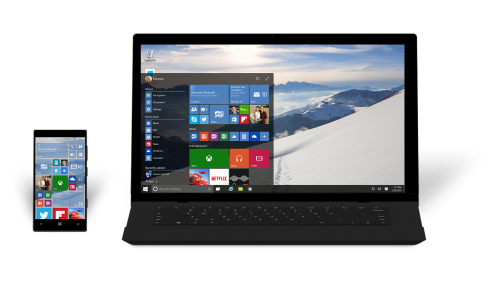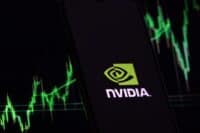Microsoft Corp. (NASDAQ: MSFT) is set to report its fiscal second-quarter financial results after the market close Monday. Thomson Reuters has consensus estimates of $0.71 in earnings per share on $26.33 billion in revenue. The same quarter of the previous year had $0.78 in earnings per share and $24.52 billion in revenue. Source: Microsoft Corp.
Source: Microsoft Corp.
Satya Nadella is firmly in control of the company, so the influences of Steve Ballmer and Bill Gates should be almost entirely in the past now. Wall Street has been enamored with Nadella’s efforts to move beyond the company’s dependence on Windows and Office software suites. While the future looks bright, at some point the Street is going to want to see how the moves to mobile and cloud are going to translate into future sales and earnings.
With potential earnings surprises and a host of product catalysts to boost visibility and earnings in 2015, Microsoft remains one of the top picks for growth and income investors. 24/7 Wall St. has included more on the 2015 outlook in our bullish and bearish evaluation of Microsoft.
On top of our own bullish and bearish case for Microsoft in 2015, investors need to consider that Microsoft was one of the top performing DJIA stocks of 2014. A screener from FINVIZ.com shows that Microsoft shares are still up 34% in the trailing 12 months from Friday’s close. Microsoft shares were up 1.6% year to date, and up almost 7% in the past 90 days as well.
ALSO READ: The World’s Most Innovative Companies
As far as what else to look for, the chart and options trading should be given careful consideration. Options traders appear to be braced for a move of $1.05 to $1.15 in either direction. Still, the open interest is not large enough to give us a serious bias in one direction or another.
Microsoft’s stock chart shows a different picture — perhaps one of caution. The peak was in mid-November above $49.50. Thereafter, the $49 level acted as hard resistance for four different trading sessions in November and early December. A December sell-off was followed by hard resistance at $48.50 after the recovery, but a late-December sell-off showed that resistance was between $47.50 and $49.75. The 50-day moving average now sits at $47.38. That is above the current share price, and Microsoft’s price recoveries have so far been followed by a series of lower highs on each recovery. The good news is that the chart is not signaling a series of lower lows simultaneously, so perhaps an inflection point is coming soon.
A few days ahead of the earnings report, several analysts have weighed in on where Microsoft’s stock price may be going. The consensus analyst price target for the stock is $50.03, and the highest listed analyst price target is $58. These are some recent analyst calls we have seen:
- Citigroup has a Hold rating and set its price target at $50.00.
- CLSA has a Buy rating and set its price target to $53.00.
- Cowen has a Hold rating and set its price target to $50.00.
Keep in mind that Microsoft is likely to offer guidance. The fiscal year-end is in June, and the 2015 consensus estimates from Thomson Reuters show earnings of $2.66 per share on almost $98.2 billion in annual revenues. For 2016, those consensus estimates are $3.14 in earnings per share on $103.9 billion in revenue.
ALSO READ: The Bullish and Bearish Case for Intel in 2015
The question is whether the growth of 13% in revenues this fiscal year may be artificially juiced by the support expiration of Windows XP in 2014. Windows 8 did not result in the gains that Steve Ballmer was hoping for, and the coming Windows 10 (skipping #9) has high hopes from Wall Street, Windows users and Microsoft itself when it is released later in calendar year 2015.
What else is there to look for? Microsoft has already raised its dividend to $0.31 per quarter. That generates a 2.6% yield with an annual payout of $1.24 per share. It can raise its payout further. The current payout is almost 47% of project earnings for this year.
How much of Microsoft’s cash is held overseas is potentially another issue. Intel showed that an overwhelming majority of cash was domiciled outside of the United States. This likely will not hamper the dividend ahead, but it could be a factor if Microsoft ever embarks in that massive stock buyback that so many investors want to see. After all, the company has roughly $100 billion among its balances of cash, short-term investments and long-term investments. That compares to a $383 billion market cap ahead of earnings.
Following the opening bell Monday morning, shares of Microsoft were down 1% at $46.68. The stock has a 52-week trading range of $35.69 to $50.05.
ALSO READ: Will You Buy Windows 10 When It Launches?
Sponsored: Want to Retire Early? Here’s a Great First Step
Want retirement to come a few years earlier than you’d planned? Or are you ready to retire now, but want an extra set of eyes on your finances?
Now you can speak with up to 3 financial experts in your area for FREE. By simply clicking here you can begin to match with financial professionals who can help you build your plan to retire early. And the best part? The first conversation with them is free.
Click here to match with up to 3 financial pros who would be excited to help you make financial decisions.
Thank you for reading! Have some feedback for us?
Contact the 24/7 Wall St. editorial team.



